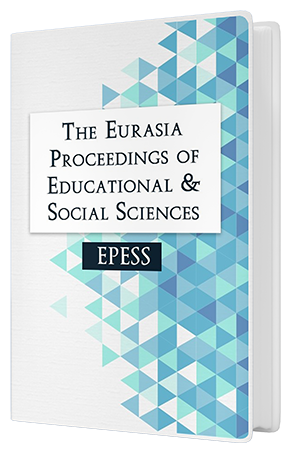Determining the STEM Discipline Identities of Female Students
DOI:
https://doi.org/10.55549/epess.1051063Keywords:
STEM education, STEM identity, womenAbstract
Different meanings can be attributed to STEM education, which is the trend approach of recent years, by societies and individuals. In order to understand the STEM approach in the mind of the individual, it is necessary to learn the perspective of STEM education or STEM disciplines. It is necessary to determine the STEM identity of female individuals, especially because of the differences between men and women who prefer STEM professions or their perspectives on STEM disciplines. In this research, it is aimed to determine the identity of the disciplines of Science, Technology, Engineering and Mathematics in female individuals. Within the scope of this aim, 125 female students studying child development were reached. Data were collected online with a short-answer form. In this form, the reasons for being a scientist, technologist, engineer or mathematician were asked. As a result of the analysis of the data, it is understood that almost half of the participants stated that they wanted to be scientists and engineers, and nearly half of them stated that they could be technology experts. In addition, it was determined that very few of them believed that they could be mathematicians. When the reasons for these data are examined, it is understood that they determine their identities in these disciplines due to reasons such as love, interest, curiosity, research, intelligence, willingness, and using their imagination. Likewise, it is understood that they cannot choose these disciplines due to reasons such as fear, anxiety, competence and unwillingness.Downloads
Published
Issue
Section
License
Copyright (c) 2021 The Eurasia Proceedings of Educational and Social Sciences

This work is licensed under a Creative Commons Attribution-NonCommercial-ShareAlike 4.0 International License.
The articles may be used for research, teaching, and private study purposes. Any substantial or systematic reproduction, redistribution, reselling, loan, sub-licensing, systematic supply, or distribution in any form to anyone is expressly forbidden. Authors alone are responsible for the contents of their articles. The journal owns the copyright of the articles. The publisher shall not be liable for any loss, actions, claims, proceedings, demand, or costs or damages whatsoever or howsoever caused arising directly or indirectly in connection with or arising out of the use of the research material. All authors are requested to disclose any actual or potential conflict of interest including any financial, personal or other relationships with other people or organizations regarding the submitted work.




